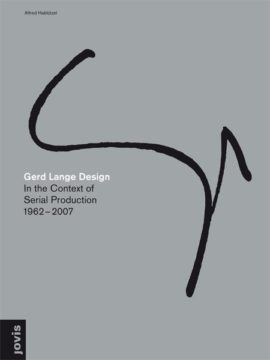Though without even knowing it, almost everyone has sat on a chair by Gerd Lange or picked up one of his products at some time or other. The furniture and product designer has created countless everyday objects, and the production runs of his chairs have been spectacularly large. In short, Gerd Lange tremendously influenced the history of design in Germany in the 1970s and 80s.
After learning the carpenter trade, Lange studied at Offenbach University of Art and Design and, in 1961, opened his own design studio in Kapsweyer, a hamlet in southwestern Germany. Just seven years later, in 1968, he designed a stacking chair made of a polyamide seat and tubular steel legs. More than a million units were produced over the course of forty-five years. The plain, functional chair with the succinct name “SM 400 K” received Germany’s Federal Prize for Occupational Seating, the U.S. Design Award, and the iF Design Award at the Messe Hannover. It can now be viewed at the Guggenheim Museum and at Rockefeller Center in New York. In 1973 Lange created the first plastic chair with wooden legs, manufactured by Thonet.
The designer and author Alfred Hablützel, a profound authority of Gerd Lange’s work, has written the first study of “Gerd Lange Design”. Richly illustrated and with insightful commentary, Hablützel’s book introduces readers to Lange’s most important designs.
- Veröffentlicht am Dienstag 10. Juni 2014 von Jovis Berlin
- ISBN: 9783868593136
- 104 Seiten
- Genre: Design, Hardcover, Innenarchitektur, Kunst, Softcover
